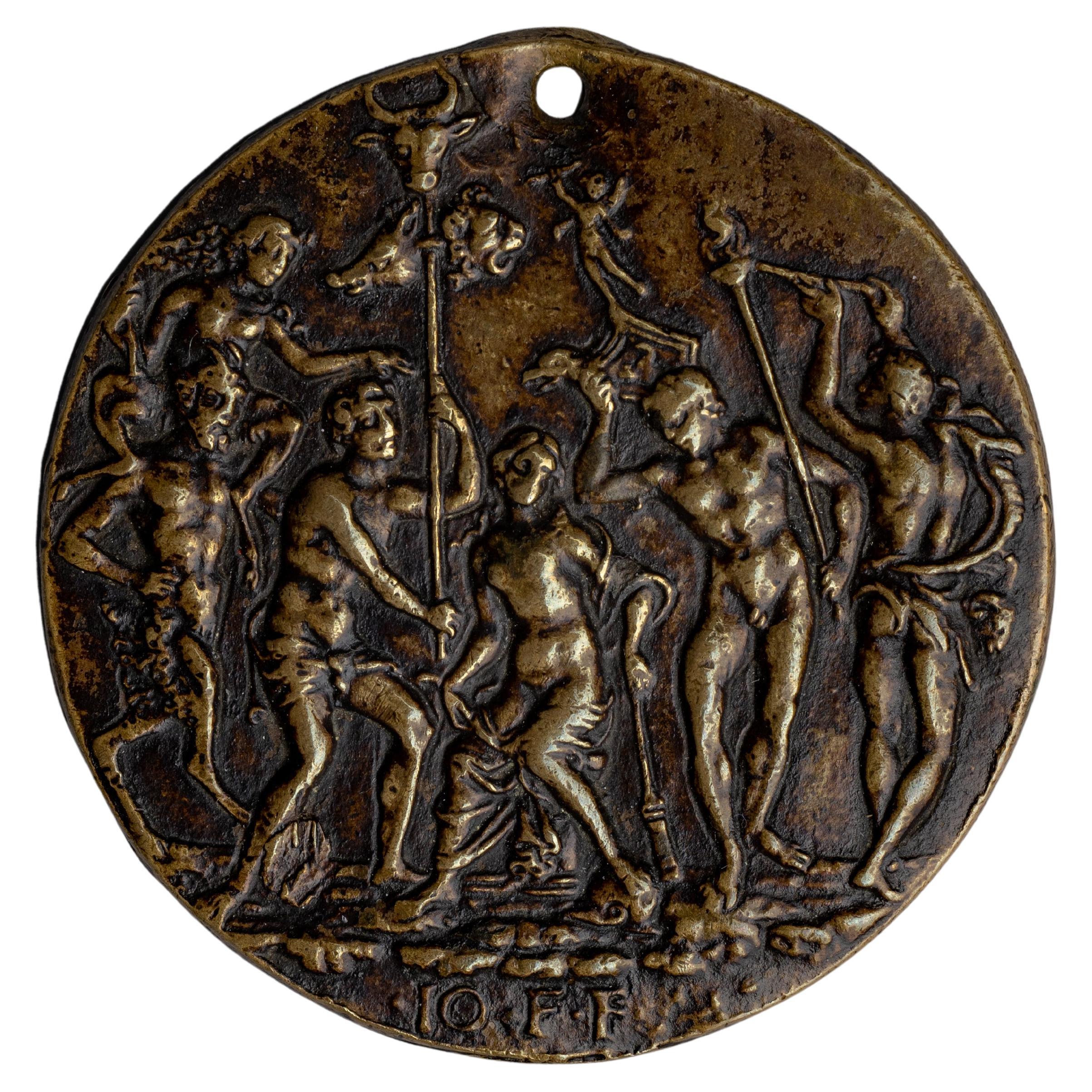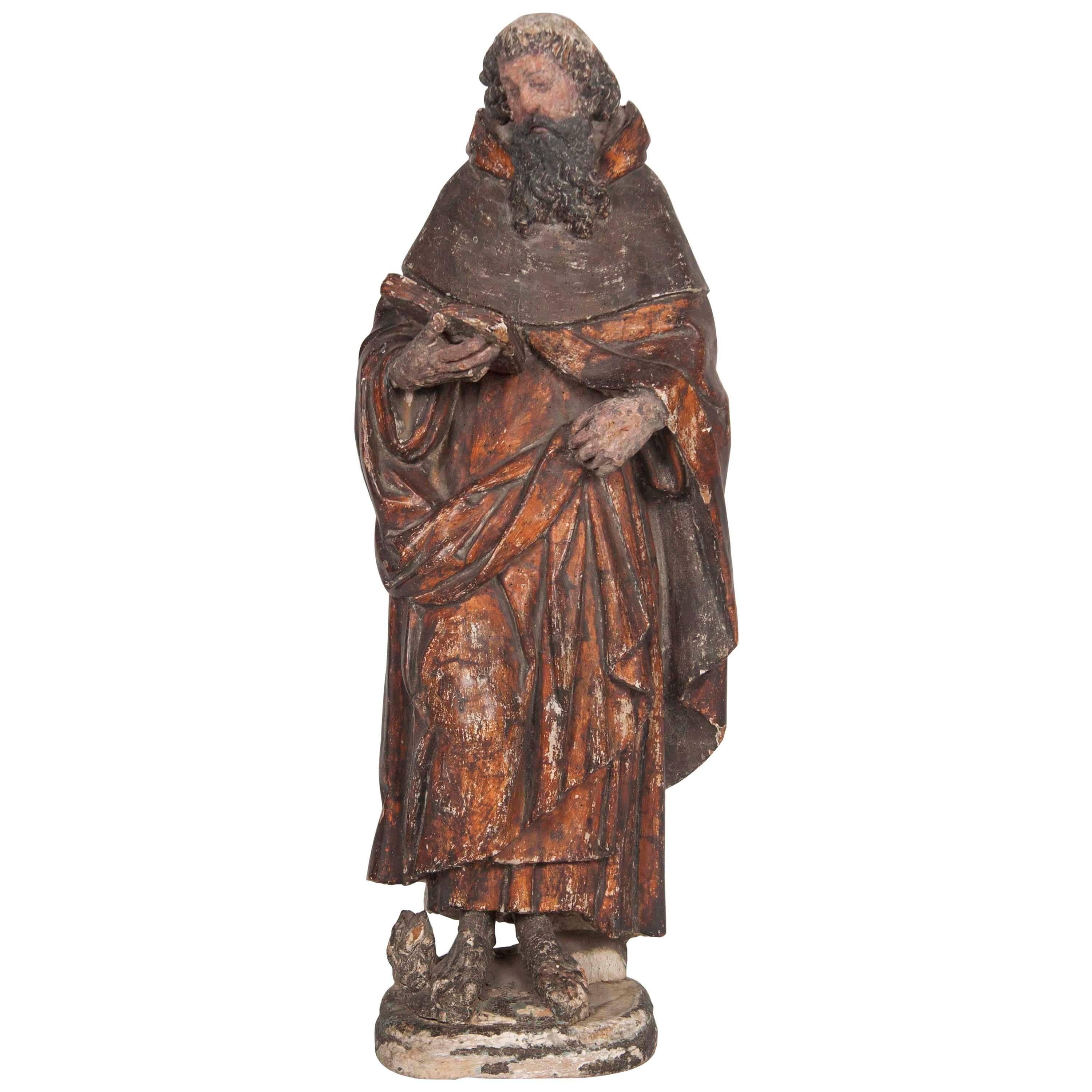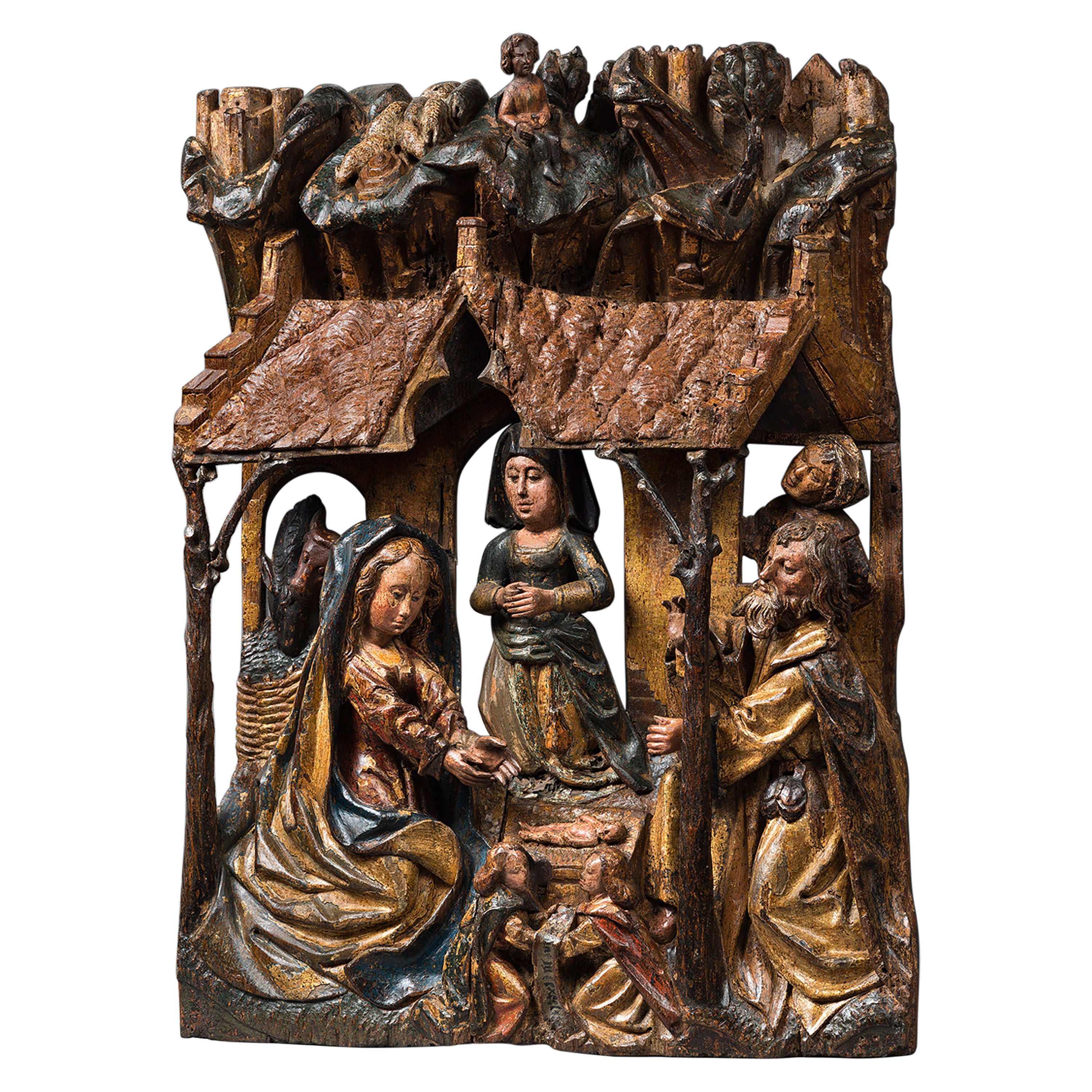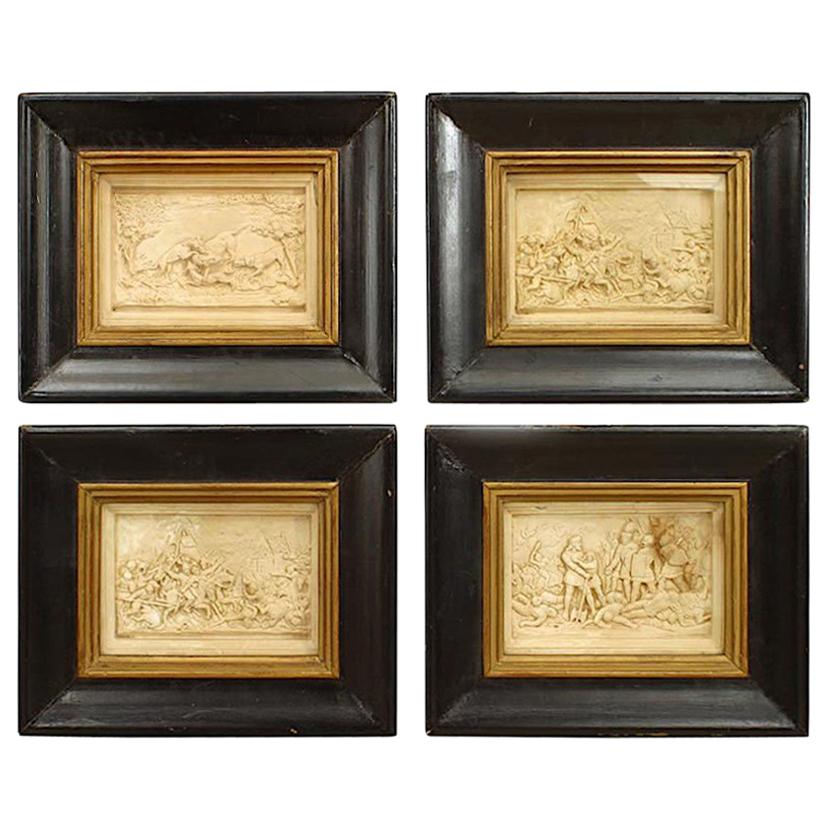Items Similar to 15th Century Italian Renaissance Giltwood Carving
Want more images or videos?
Request additional images or videos from the seller
1 of 14
15th Century Italian Renaissance Giltwood Carving
About the Item
15th Century Italian Renaissance Giltwood Carving .
This magnificent 15th century Italian Renaissance gilt wood carving with a serpent is displayed on a revolving iron base. This mounted fragment hails from Tuscany. It can be turned to show all its beauty.
A one of a kind statement antique Renaissance sculpture!
- Dimensions:Height: 18 in (45.72 cm)Width: 16 in (40.64 cm)Depth: 10.5 in (26.67 cm)
- Style:Renaissance (Of the Period)
- Materials and Techniques:
- Place of Origin:
- Period:
- Date of Manufacture:15th Century
- Condition:Wear consistent with age and use. Very good condition given its age.
- Seller Location:Houston, TX
- Reference Number:
About the Seller
5.0
Vetted Seller
These experienced sellers undergo a comprehensive evaluation by our team of in-house experts.
Established in 1990
1stDibs seller since 2009
579 sales on 1stDibs
Typical response time: <1 hour
- ShippingRetrieving quote...Ships From: Houston, TX
- Return PolicyThis item cannot be returned.
More From This SellerView All
- 19th Century Italian Alabaster BustLocated in Houston, TX19th century Italian alabaster bust. Well sculpted antique Italian alabaster or marble bust of a classical female mounted on a plinth. This is a beautifully detailed antique alabaster bust...Category
Antique 1860s Italian Classical Roman Busts
MaterialsAlabaster
- 19th Century Italian Carved Wood Santo FootLocated in Houston, TX19th century Italian carved wood Santo foot. This stunning antique Italian carved wood Santo foot of an Archangel dressed as a Roman soldier. This beautifully carved and gilded scu...Category
Antique 19th Century Italian Baroque Figurative Sculptures
MaterialsWood
- 19th Century Italian Marble Bust of AphroditeLocated in Houston, TX19th century Italian marble bust of Aphrodite. Our antique Italian Carrara marble bust of Aphrodite is expertly carved and rests on a...Category
Antique 1890s Italian Classical Greek Busts
MaterialsMarble
- 19th Century Renaissance Style ChairLocated in Houston, TX19th century Renaissance style chair. Handsome antique Continental Renaissance style or Gothic style walnut Savonarola chair, throne chair, si...Category
Antique 19th Century European Renaissance Armchairs
MaterialsSuede, Fabric, Walnut
- Monumental 17th Century Italian Baroque Carved Wood BustLocated in Houston, TXMonumental 17th century Italian Baroque carved wood bust. Expertly carved Italian Baroque walnut bust /torso from the 17th century. This gorgeous...Category
Antique 17th Century Italian Baroque Figurative Sculptures
MaterialsWalnut
- 19th Century Italian Terracotta Bust of a Classical MaleLocated in Houston, TX19th century Italian terracotta bust of a classical male. This monumental antique Italian terracotta bust sculpture of a classical Roman male is a well executed statement piece and...Category
Antique 19th Century Italian Classical Roman Busts
MaterialsTerracotta
You May Also Like
- 15th Century Italian Renaissance Bronze MedallionLocated in Fort Lauderdale, FLRenaissance bronze medallion made by Master IOFF in the mid 15th century, showing the mythological scene of Ariadne on Naxos. Made in the mid-15th ...Category
Antique 15th Century and Earlier Italian Renaissance Mounted Objects
MaterialsBronze
- 16th Century Italian Renaissance Carving of a Male SaintLocated in Stamford, CT16th century Italian carved and polychromed figure of a male saint or prophet with a wonderful presence. Shown holding an open book in his right hand with flames at his feet, mid-16t...Category
Antique 16th Century Italian Renaissance Religious Items
MaterialsWood
- Ecce Homo - Florence, 15th centuryLocated in Bruxelles, BEA terracotta bust "Ecce Homo" Florence, 15th century 53 x 44 x 31 cmCategory
Antique 15th Century and Earlier Italian Renaissance Figurative Sculptures
MaterialsTerracotta
- Late 15th Century Polychrome Wood Carving Depicting the NativityLocated in Saint-Ouen, FRWhile the birth of Christ is briefly told in the Gospel of Luke (2, 7) it is in the apocryphal texts that we find most of the elements and details that have then inspired artists. As of the 14th century and even more of the 15th century the subject of the Adoration of the Child replaces in Western art the scene of the Birth, much favoured in Byzantine art. Instead of being depicted lying with the new-born swathed in the manger, the Virgin is now kneeling, her hands joined in prayer in front of the naked child. This change was probably hastened by the popularity of the visions of Saint Bridget of Sweden to whom the Virgin allegedly appeared to show how she had given birth to Jesus (Visions, VII, chap. 21). Sheltered by a thatch-roofed structure the Virgin is kneeling in front of the Child Jesus. She wears a magnificent red dress under a large gold cloak. Her curled blond hair is partially veiled. The newborn is lying on a straw mat. Joseph is depicted with a parted beard and stands opposite from the Virgin. He wears a tunic and a coat with a purse hanging from the belt. His costume reminds us of the long journey him and Mary have accomplished to reach Bethlehem. Two other women are present. One is looking through the stable’s window to observe the Holy Family while another one kneels in prayer in front of the divine child. The rich costume of the lady might indicate she is a donator. However they could also both represent the women who took part in the birth of Christ, Zelemi and Salome. Salome, incredulous did not believe in the virginal conception of Mary and she is represented far from the scene. The artist has depicted her with an expression of doubt on her face. Zelemi, on the contrary, is a believer. She is rewarded by a place of honour at the heart of the scene, close to Mary. To the left the donkey and ox that have accompanied Mary and Joseph to Bethlehem observe quietly the scene. On the foreground two angels hold a scroll reading an excerpt from the Gloria : “/Gloria/ in excelsis /Deo/.” One of the angels wears a blue cape while the other’s is red Those two colours are very significant as during Middle-Ages blue symbolises hope and red charity. Together they express the hope in redemption thanks to the advent of Christ and his sacrifice to come. Above the main scene, up a cliff, a small shepherd lets his herd of sheep graze amidst the trees. He is framed by two walled cities. This wood carving is the work of a very skilled and inventive artist. The piece bears witness to his exceptional talent. The realism of the scene is emphasised by the amount of details depicted. The refinement of the carving itself is highlighted by the well preserved polychromy. This key moment of the New Testament is set in a contemporary context thanks to the clothes of the characters and the scenes of rural life. The universal dimension of the scene is intensified while allowing contemporary viewers to grasp its meaning more easily. This care for details, the picturesque realism as well as the extraordinary rendition of the cloths suggest it was made by a Flemish artist during the late 15th century. This relief can be compared with the panel of the Nativity from the Saint-Vaast altarpiece made by Jacques Daret between 1433 and 1435, today in Madrid’s Thyssen-Bronemisza Museum. Literature Louis Réau, Iconographie de l’Art chrétien...Category
Antique 15th Century and Earlier Dutch Gothic Figurative Sculptures
MaterialsWood
- Italian Renaissance Style Soapstone CarvingsLocated in New York, NY4 Italian Renaissance style (19th Century) carved soapstone wall plaques of Medieval scenes under glass in black frames.Category
Antique 19th Century Renaissance Figurative Sculptures
MaterialsSoapstone
- 15th Century Gothic VirginLocated in Madrid, ES15th century Gothic Virgin Gothic Virgin of the 15th century Virgin in carved and polychrome wood of the 15th century. In its original state, muse...Category
Antique 15th Century and Earlier Figurative Sculptures
MaterialsWood





